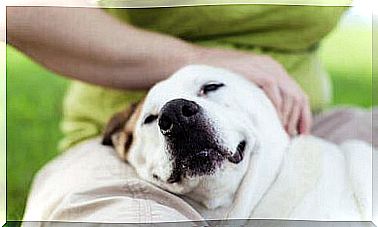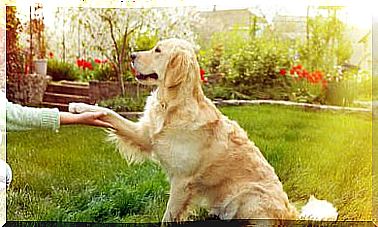The Most Frequent Eye Disorders In Dogs

While dog eye care is fairly straightforward, there are some eye ailments that frequently affect these animals. It is therefore important to know them in order to be able to identify them if they appear, in order to always keep the health of our animals under control.
It should be borne in mind that eye disorders in dogs can be caused not only by congenital problems, but also by lack of hygiene, by strokes or by contact with bacteria. It should also be remembered that, curiously, the ophthalmological pathologies that affect our furry friends are the same ones that can affect us too: let’s see some of them.
Conjunctivitis
Conjunctivitis occurs in dogs as a secondary symptom due to some virus present in its body and is characterized by a redness of the eye, accompanied by profuse tearing. It is a rather annoying disorder, for this reason the eye affected by conjunctivitis usually tends to remain semi-closed.
Another symptom of conjunctivitis is the abundant formation of green, white or yellowish cisps: you will have to remove them and carefully clean the area to prevent them from getting into the dog’s eyes and causing further harassment. It is also possible that the dog, in some moments, proves to be excessively sensitive to light, whether natural or artificial.
If you notice these symptoms, we strongly advise you to take your dog to the vet, to prevent the problem from becoming chronic and also to identify what type of virus is causing the conjunctivitis: in this way it will be possible to diagnose certain diseases that could be endangered. the life of your four-legged friend.

Cataract
The cataract is the leading cause of blindness in dogs: it is a sort of haze in the iris of the dogs and usually is hereditary. It usually appears around six years of age in large or giant breed dogs and around nine years of age in medium and small dogs.
In the event that the cataract is not treated, it becomes thicker, almost forming a white veil, which prevents the total or partial vision of the dog.
Cataracts, in addition to age and hereditary factor, can also appear after a strong blow to the eye or as a consequence of diabetes.
The only known treatment to eliminate cataracts is the surgical removal of the opaque veil covering the dog’s eye.
Glaucoma
Also known as ocular hypertension, glaucoma is the increase in ocular tension (blood pressure of the eye), which in the long run damages the nerve and the retina. If left untreated, the dog’s visibility decreases until the affected eye is completely blinded.
Glaucoma, in general, is always accompanied by certain pathologies that cause a change in blood pressure, so it can be said that glaucoma is a reflection of a more serious problem.
Glaucoma is characterized by a rather evident inflammation of the eye, which begins to take on a bluish corneal color as the disease progresses. It is vitally important to take the dog to the vet immediately, since the course of this pathology is very rapid and causes irreversible damage within 24 hours following the onset of inflammation.

A few more recommendations
- In all three cases presented above it is necessary to resort to the intervention of the veterinarian: do not give your dog any treatment that has not been prescribed by the doctor.
- Cleaning is a key point to ensure the good health of the eyes : get into the healthy habit of cleaning your dog’s hair around the eyes and eliminating any cisps.
- Pay attention to your dog’s body language : if you notice that he rubs his eyes with his paws or against some object or if by chance he cannot keep them open, it is likely that he has gotten into some dust or otherwise something that bothers him.
- Constant tearing can also indicate the presence of dirt in the eyes or be a symptom of an eye disease.
- Take your dog to the vet regularly . At least two routine visits per year are recommended, in the case of a healthy animal: it is better to be safe than sorry.









